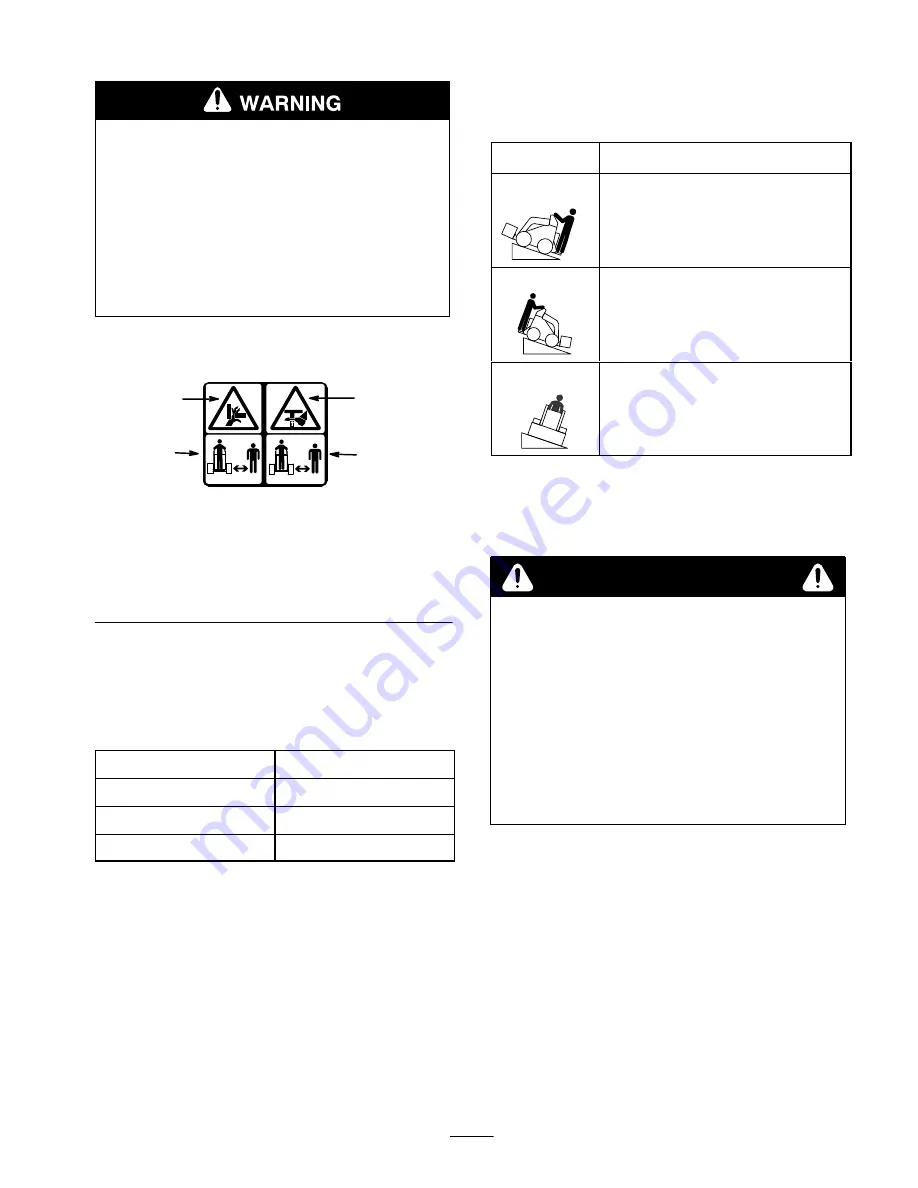
3
POTENTIAL HAZARD
•
When the engine is off, attachments in the
raised position can gradually lower.
WHAT CAN HAPPEN
•
Someone nearby may be pinned or injured by
the attachment as it lowers.
HOW TO AVOID THE HAZARD
•
Always lower the attachment lift each time you
shut off the traction unit.
Safety Decals
# 100–4650
1
3
2
3
Figure 1
1.
Pinching/crushing
hazard—hand
2.
Pinching/crushing
hazard—foot
3.
Keep bystanders away
Specifications
Note: Specifications and design are subject to change
without notice.
Width
47.75 inches (121.3 cm)
Length
25 inches (63.5 cm)
Height
21 inches (53 cm)
Weight
212 lbs (96.2 Kg)
Stability Ratings
To determine the degree of slope you can traverse with the
blade installed on a traction unit, find the stability rating
for the hill position you want to travel in the following
table, then find the degree of slope for the same rating and
hill position in the Stability Data section of the traction
unit operator’s manual.
Orientation
Stability Rating
Front Uphill
D
Rear Uphill
C
Side Uphill
B
Note: On traction units with a rear operator platform, the
blade is rated for use without the counterweight. If you
use the counterweight with the blade, the traction unit will
be less stable in the front and side uphill positions.
WARNING
POTENTIAL HAZARD
•
Exceeding the maximum recommended slope
can cause the traction unit to tip.
WHAT CAN HAPPEN
•
If the traction unit tips, you or bystanders could
be crushed.
HOW TO AVOID THE HAZARD
•
Do not drive the traction unit on a slope steeper
than the maximum recommended slope, as
determined in the previous table and the
traction unit operator’s manual.
Operation
Note: Refer to your traction unit operator’s manual for
complete instructions on installing/removing attachments
onto/from the traction unit and connecting/disconnecting
hydraulic hoses.
Note: Always use the traction unit to lift and move the
attachment.











